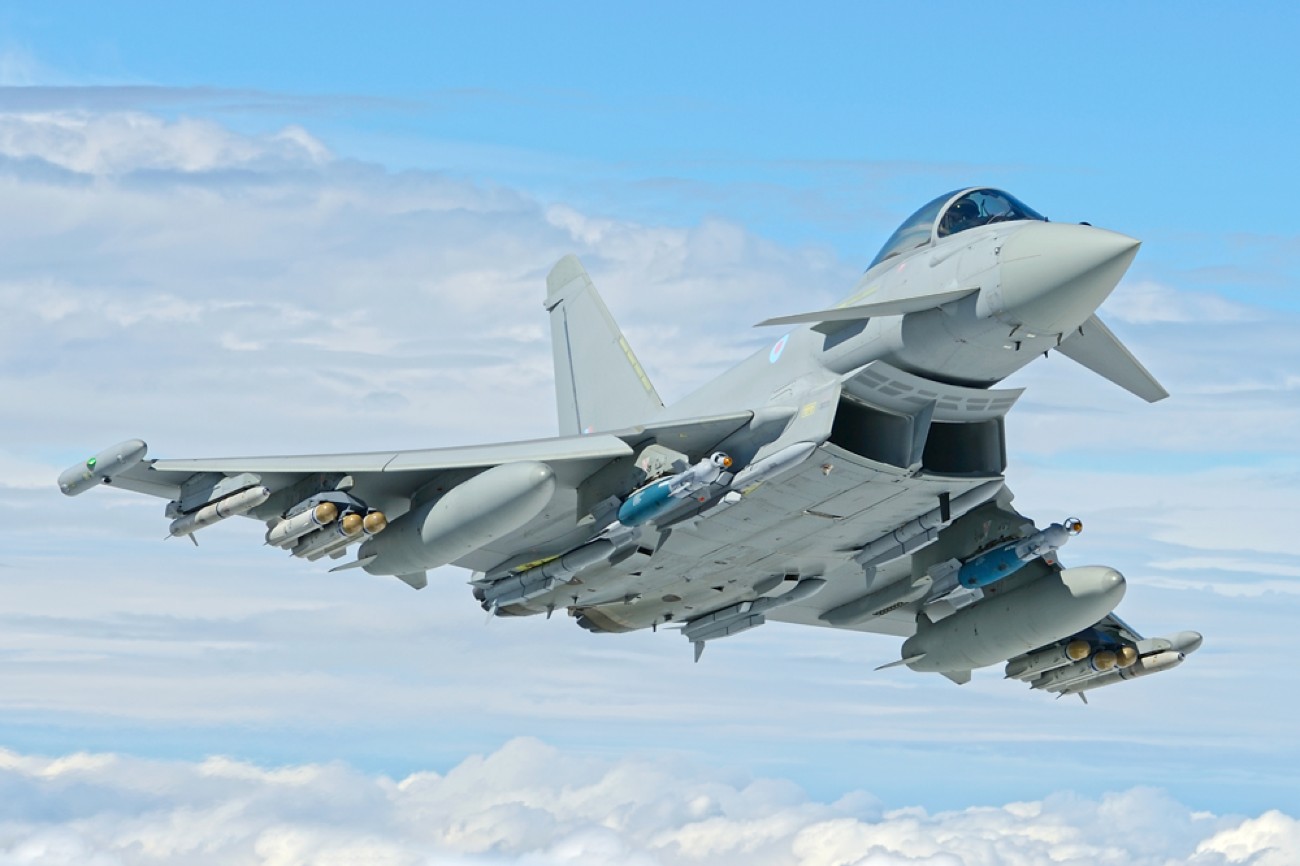The UK government has laid to rest ongoing speculation surrounding the future of its fleet of 30 early production ‘Tranche 1’ Typhoon jets. Contrary to hopes of potential repurposing or deployment, the government has reiterated its commitment to scrapping the aircraft for parts.
Tranche 1 aircraft, which represent the initial operational capability of the Typhoon series, are set to undergo a systematic “Reduce to Produce” program. This initiative aims to salvage usable components from the jets and contribute to the spare inventory for the broader Typhoon fleet.
The announcement came in response to queries from Clive Lewis, Labour MP for Norwich South, who sought clarification regarding the present status of Tranche 1 aircraft by submitting a Parliamentary Written Question.
James Cartlidge, the Minister of State for the Ministry of Defence, responded that since February 2022, no Tranche 1 Typhoon aircraft have been retired or donated to Ukraine.
Cartlidge said, “The Tranche 1 fleet will undergo a Reduce to Produce program to strip them of useable parts to contribute to the Typhoon fleet spares inventory.” The development was first reported by UK Defence Journal.
As of now, there are 30 Tranche 1 aircraft on the military register, with plans for 26 to leave service by the end of March 2025. The plan, however, has sparked concerns, notably within the Defence Select Committee, over a potential gap in the country’s defense capability.
Last year, Mark Francois MP, addressing the Defence Select Committee, questioned the logic behind retiring these aircraft and suggested that at least some of them should be placed in a war reserve.
Subsequently, in September this year, a prominent group of British Members of Parliament released an investigative study proposing that the Tranche 1 Typhoon FGR4 fighters of the Royal Air Force (RAF) should be mothballed rather than scrapped.
The inquiry criticized the decision to advance the retirement date of the Tranche 1 Typhoon to 2025 and highlighted the absence of a reserve force within the RAF. The MPs contended that instead of rendering the aircraft obsolete, there is potential for them to undergo upgrades.
However, despite concerns and debates surrounding the retirement of the UK’s Tranche 1 Eurofighter Typhoons, the Royal Air Force (RAF) has previously asserted that the phased withdrawal of these aircraft will not pose operational challenges.
Why Is the UK Not Transferring Typhoon Tranche 1 Jets to Ukraine?
Under the present strategy, the majority of the Royal Air Force’s (RAF) 30 Typhoon Tranche 1 aircraft are scheduled to conclude their service on March 31, 2025, with only four earmarked for retention until 2027.
This decision will diminish the overall count of Typhoon aircraft within the Royal Air Force to 107, encompassing 67 Tranche 2 jets and 40 Tranche 3 jets.
With the impending 2025 deadline, discussions concerning the strategic consequences of this decision persist, providing an ongoing focal point for deliberations within both military and political spheres.
Earlier this year, reports suggested the potential for the UK to provide its Eurofighter Typhoon Tranche 1 fighter jets to Ukraine, which is currently engaged in a conflict with Russia and seeks Western aircraft to counter Russian forces.
However, logistical challenges led the UK to dismiss the idea of providing Tranche 1 jets to Ukraine, a decision reaffirmed by the Minister of State for the Ministry of Defence.
Experts weigh in on the limitations of these aircraft, suggesting that they may not significantly contribute to the ongoing conflict and could encounter several hurdles.
The Royal United Services Institute (RUSI) pointed out several key factors affecting Typhoon Tranche 1’s suitability for Ukraine’s needs. These include incompatibility with the Meteor missile and requiring US approval for the export of AIM-120C8/D.

Moreover, the Typhoon’s design, optimized for high altitudes and speeds, poses challenges in the face of the Russian long-range surface-to-air missile (SAM) threat.
RUSI further explained that the Typhoon’s air-to-ground capabilities are constrained to Paveway II bombs with the Litening III targeting pod, rendering them less effective in the threat environment over Ukrainian frontlines.
Additionally, it highlighted concerns about sustaining and operating these fighters in Ukraine, given the country’s dispersed airbases. The Typhoon’s underslung air intakes make it vulnerable to engine damage from foreign object debris (FOD), a common issue in the relatively austere bases used by the Ukrainian Air Force to avoid Russian strikes.
In essence, while the idea of supplying Typhoon Tranche 1 jets to Ukraine was initially considered, logistical, operational, and strategic constraints have led the UK to rule out such assistance, emphasizing the complex challenges involved in supporting Ukraine’s defense needs amidst the ongoing conflict.
- Contact the author at ashishmichel@gmail.com
- Follow EurAsian Times on Google News




